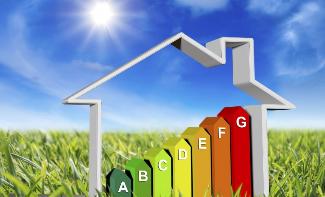 12
Giugno
2015
12
Giugno
2015
Obligation for in-house energy auditing
Guidelines for obligatory energy auditing pursuant to Italian Legislative Decree 102/2014 on energy saving and optimisation in ceramic factories were presented at a recent conference
An energy management tool that serves not just to meet legal requirements but to optimise energy usage in the ceramic sector was unveiled at a conference held at Confindustria Ceramica’s headquarters on 12 June this year. The conference was introduced by the association’s Director General Armando Cafiero and featured a talk given by Daniele Ranieri from Enea on the new aspects introduced by Decree Law 102/14 and presentations by technicians from the consulting firm Innowatio. The meeting was concluded by Maria Chiara Bignozzi, Director of Centro Ceramico di Bologna.
European Directive 2012/27/EU on energy efficiency establishes energy saving targets for each member state and is enacted in Italy through Legislative Decree no.102/2014 “Enactment of directive 2012/27/EU on energy efficiency”, which identifies the parties, tools and timeframes for meeting the objectives. In particular, Art. 8 of the decree makes it obligatory for large corporations and companies benefiting from incentives as major energy producers to perform Energy Auditing. The Energy Audit thus becomes the principal tool for identifying energy saving opportunities for the country.
Confindustria Ceramica saw the need to provide its members with a specific support document to help them meet the obligations of this decree with the greatest possible efficiency, thereby transforming a legislative obligation into a real opportunity for savings. For this purpose it launched a project together with Yousave S.p.A. that resulted in the creation of “Guidelines for the development of Energy Audits in the ceramic sector in the light of legislative decree no. 102/2014”. The document provides information and support tools for energy auditing, focusing in detail on the ceramic production process, as well as an overview of the typical energy-saving measures that can be adopted in the sector. By consulting these Guidelines, the party appointed to perform the energy audits will receive step-by-step support in reconstructing the energy model of the site, identifying opportunities for improving efficiency and drafting the report.
The Guidelines include calculation tools (formulas, figures, calculation assumptions) for reconstructing the energy model so as to identify consumptions and energy performance indexes for each functional area. Good practices are also presented, along with advice for drafting an energy audit report that complies with legal obligations but can also be used by the company management.
The ceramic tile and refractory materials sector has a natural gas consumption of 1.5 billion m3/year, equivalent to 12.7% of the country’s total consumption for industrial uses, and an electrical energy requirement of 1,800 GWh/year (just 500 GWh/year is produced by cogeneration), with “energy” accounting for around 20% of production costs. The industry’s companies are placed under severe strain by the energy costs at their Italian sites and are therefore constantly in search of energy efficient and technologically innovative solutions that will enable them to lower their energy consumption and compete in the international arena.
Following the audits performed at the pilot sites, it was possible to gain a representative picture of the energy situation in the ceramic industry. Energy requirements consist on average of 66.7% thermal energy and 33.3% electrical energy; 67.6% is attributable to the industrial process, while more than 16% of electricity consumption is for compressed air and ventilation and around 4% for lighting. The departments that absorb the highest quantities of electricity are grinding and pressing, which both account for about a quarter of the electrical energy requirements of the factory. Natural gas consumption is almost entirely attributable to the production process: firing 48.1%, spray drying 26.1% and drying 16.9%.
From the energy audits conducted at pilot sites and based on the experience gained by Yousave over the years, it was possible to identify various measures for improving the energy efficiency of the production process and of the auxiliary services typical of a ceramic production site. The most typical measure adopted in the sector was found to be heat recovery from exhaust gases or kiln cooling air, while the most critical functional area where the greatest inefficiencies were identified is the compressed air circuit. There are various opportunities for improvement, from regulation via VSD (Variable Speed Drive) compressors to a search for and reduction of compressed air leaks. Other significant energy saving opportunities that can be replicated on the various sites in the sector include LED lighting, adjustment of spray dryer ventilation and replacement of the diaphragm pumps. Full details of achievable savings and the corresponding cost effectiveness are provided in the report delivered to all Confindustria Ceramica members.